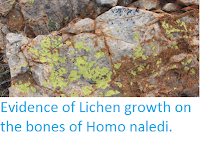Biological soil crusts are communities of Mosses, Cyanobacteria, Lichens and other organisms that bind together the upper layer of soil in many areas lacking extensive plant cover. These crusts cover about 40% of the Earth's land surfaces, and help to prevent soil erosion in many desert and semi-desert ecosystems. Members of the Lichen forming Fungus genus Endocarpon are often dominant in such ecosystems, forming squamulose thalluses that bind together soil particles beneath them.
In a paper published in the journal Scientific Reports on 3 August 2017, Tao Zhang, Meng Liu, and Yan-Yan Wang of the State Key Laboratory of Mycology at the Institute of Microbiology of the Chinese Academy of Sciences, Zhi-Jun Wang, also of the State Key Laboratory of Mycology at the Institute of Microbiology of the Chinese Academy of Sciences, and of the College of Life Science at the Southwest Forestry University, Xin-Li Wei, again of the State Key Laboratory of Mycology at the Institute of Microbiology of the Chinese Academy of Sciences, and Jiang-Chun Wei, once again of the State Key Laboratory of Mycology at the Institute of Microbiology of the Chinese Academy of Sciences, and of the University of the Chinese Academy of Sciences, describe two new species of Endocarpon from the Ningxia Hui Autonomous Region of northern China.
The first new species is named Endocarpon deserticola, where 'deserticola' means 'desert-dweller'. This species was found forming dark brown or black thaluses up to 4 mm across on calcareous sands, and is distinguished by the production of numerous perithecia (spore-producing bodies).
Endocarpon deserticola: (A) Upper surface of squamae with abundant perithecia, scale bar is 1 mm; (B) an ascus containing two ascospores, scale bar is 10 μm. Zhang et al. (2017).
The second new species is named Endocarpon unifoliatum, where 'unifoliatum' means 'single thalus'. The thaluses of this species are concave, with a white or light grey centre and a black or dark brown rim. This species also reaches about 4 mm across, and grows on calcareous sands.
Endocarpon unifoliatum: (C) upper surface of unifoliate squama with slightly upturned margins, the arrow pointing to white portion of thallus, scale bar is 0.5 mm; (D) muriform ascospores, scale bar is 10 μm. Zhang et al. (2017).
See also...
Follow Sciency Thoughts on Facebook.






